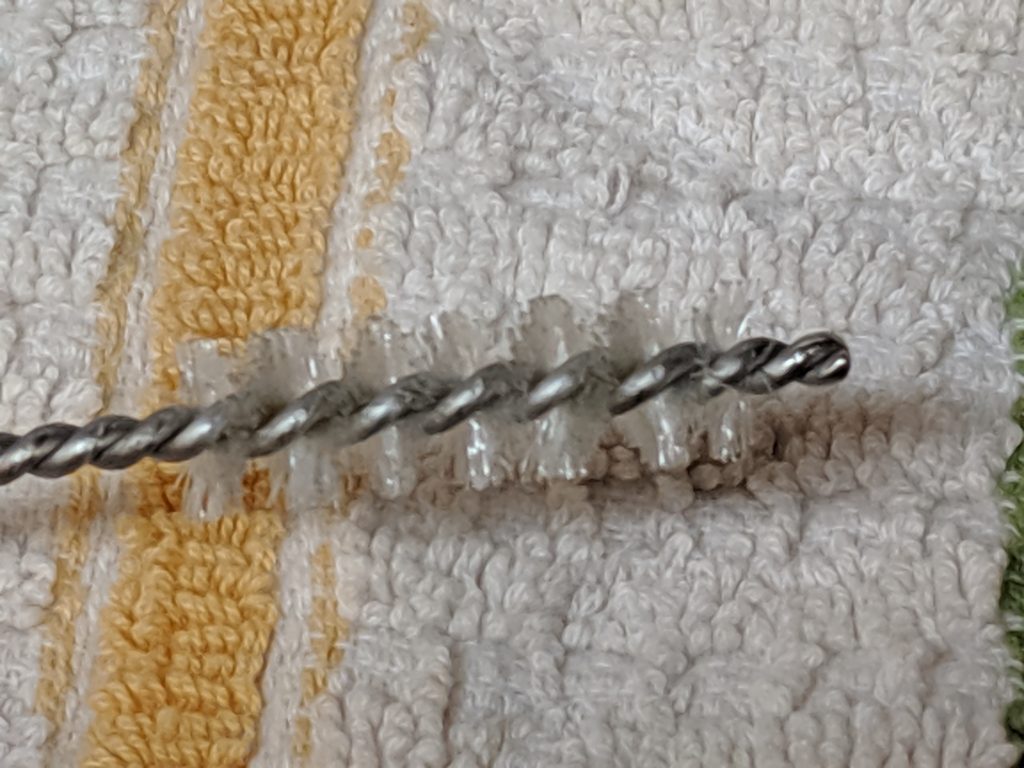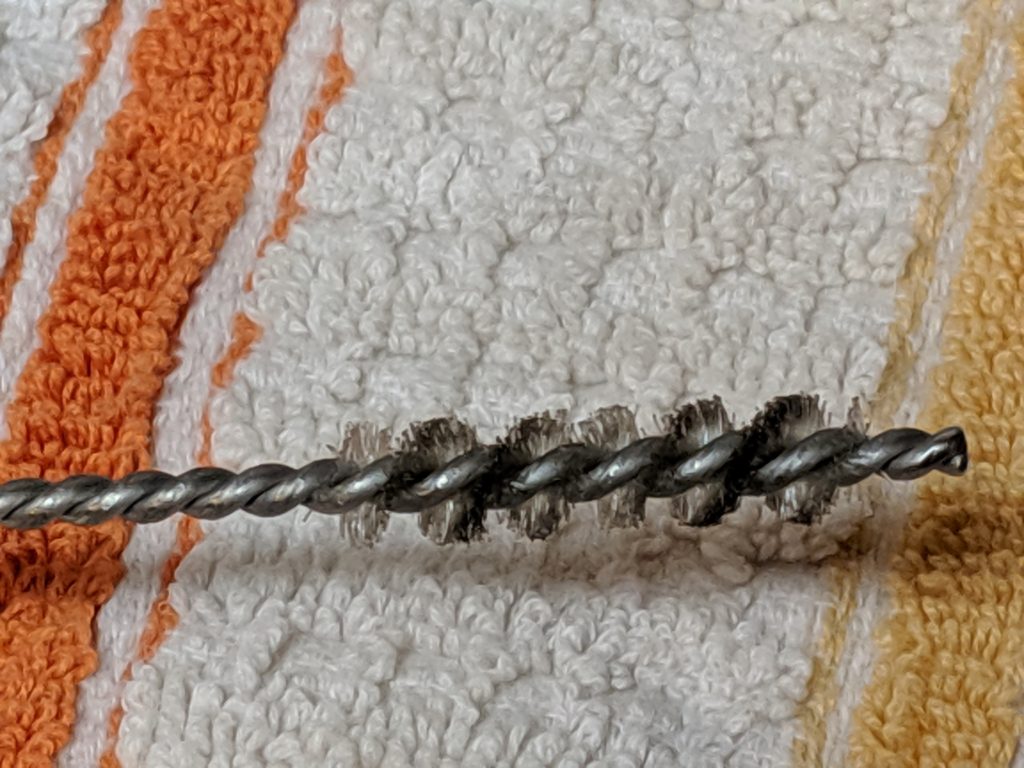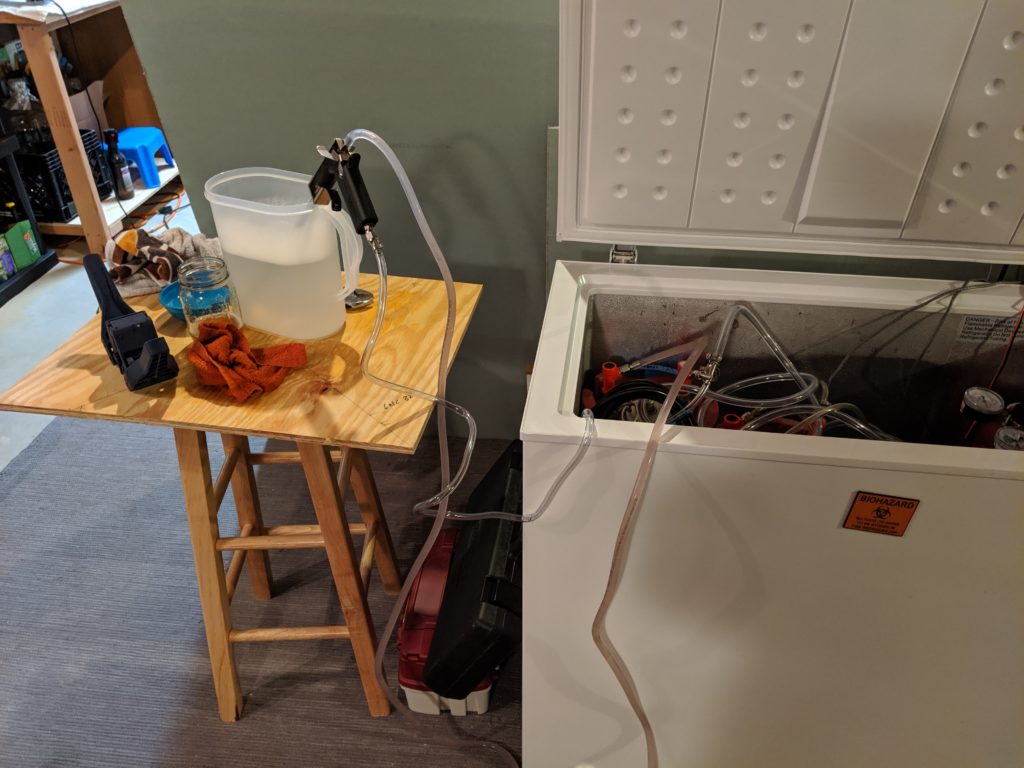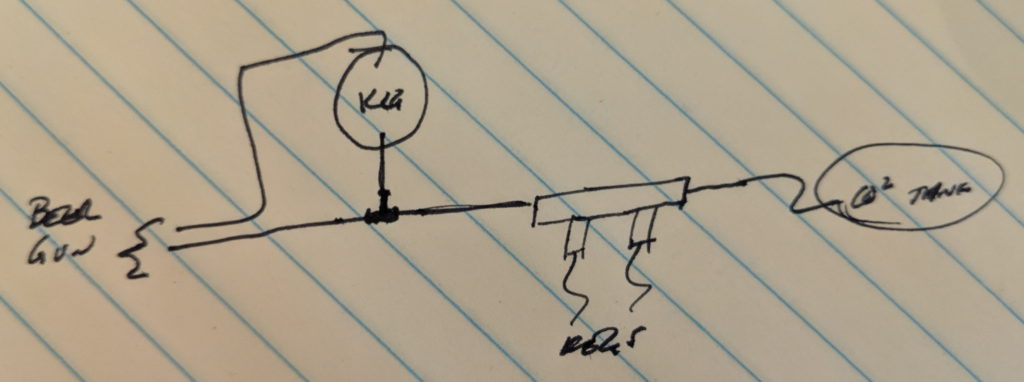Beergun!
I’m in a predicament… I have a keg of wine barrel aged saison that is very nice, but also not a ‘daily drinker’. I also have to prepare some bottles for the SJ Poor Challenge. So I broke down and bought a Blichmann Beergun v2.
For starters, it comes in a nice box with most of the stuff you need. I had to make some modifications because I use pin-lock kegs, but the modifications were easy enough. Blichmann recommends cleaning prior to the first use, and not only is it a smart thing, it looks like there may have been some machine oil residue in the beer tube of mine…

This was the brush after using it to clean and re-clean the CO2 tube. 
This was the brush after using it to clean and re-clean the beer tube. The dark oily stuff was from the first cleaning.
The Setup
Prior to actually using my Beergun, I looked on YouTube at a few videos. One video showed a nice setup and I took an idea from the author – I used a pitcher full of Star San to hold the Beergun between filling. The other (which I’m not going to link to) showed how important organization is when doing something like this.
My initial setup was less than ideal, but it was semi-functional, and temporary. My table was a piece of plywood on a stool (not the greatest), and that presented some difficulties (if I were to push down at the wrong spot, the whole setup could end up on the floor). The second time I did this (sorry, no picture), I used some sawhorses (definitely more stable) and an old tray to keep the spillage contained.

In the image above, I have the beer CO2 line go from my second manifold to a T connection that goes to both the keg and the beer gun (see the diagram below).

My process went largely the same as in the video I linked to, just a bit more rough. Fortunately, nothing ended up on the floor, and I bottled 12 bottles with only one with a low-fill (I need to send 10, so the extra two will stay at home including that low-fill bottle).
A few weeks later, I bottled that keg of red wine barrel aged saison, and with the exception of one low-fill, it went well.